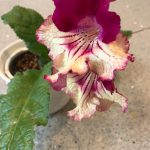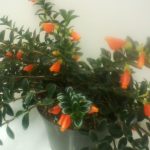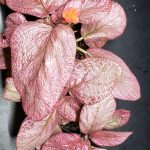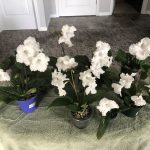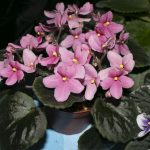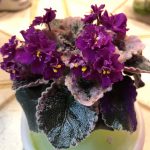The genus Codonanthe (co- doe- NAN- thee) was chosen by Martius in 1829 to refer to the subcampanulate (almost bell shaped) corolla in some of the species. Several species are in cultivation where they tolerate the less moist and warm conditions than are available in their native low altitude forests. Codonanthe is a genus of about 15 species that occurs from Mexico to Brazil and from the Lesser Antilles to Peru and Bolivia.
Codonanthe are found growing epiphytically in ant nests. A symbiosis exists between the Codonanthe and the ants in the tropics. The extrafloral necatries on the lower surfaces, in the axils of the leaves, and at the base of the sepals produce sugars that attract the ants. The ants cross-pollinate the Codonanthe. The seeds are enclosed in an aril. The aril is a fleshy tube arising from the seed stem (funicle). The arils are brightly colored and are taken by the ants as food and deposited in the anthill where they germinate.
Codonanthe are branching and trailing plants which spread into colonies by means of roots from the leaf axils. Codonanthe do well in hanging baskets. They can be propagated by tip cuttings massed in a hanging basket or azalea pot. Most flowers are white and tubular in form, with short flaring lobes.
Codonanthe do best in soilless mix consisting of one part peat moss to one part vermiculite and one part perlite. Water plants with one quarter strength of a granular fertilizer. Use this solution every time you water the plants. Codonanthe need high humidity to grow and bloom well. They like low intensity but continuous light which is well suited to a light garden.
